How to choose an air conditioner for home and apartment: varieties, manufacturers + selection tips
At times, the summer heat becomes unbearable. At such moments, the cooling climatic equipment that saves the most comfortable conditions for residents in the room is a great rescue, isn't it?
Have you decided to buy HVAC equipment, but don’t know how to choose an air conditioner to meet all the requirements?
We will show you how to cope with this task - the article considers various types of air conditioners, their features and capabilities. The algorithm for calculating the required power is shown, the subtleties and nuances of the choice are highlighted. Indeed, one cannot act at random in such a matter: the quality of cooling directly depends on correctly selected technical parameters.
We also reviewed the best manufacturers of this category of equipment. Before you go to the store, we suggest you study the useful photo and video information collected in this article.
The content of the article:
Varieties of climate technology for the home
The first thing you need to decide before buying is the type of air conditioner design. This parameter must meet all the requirements and features of the room in which it is planned to install the device.
There are two main groups of household climate equipment - split systems and monoblock air conditioners.
The main types of split system designs
The most popular and common type of air conditioners are split systems. In apartments and houses they are installed most often.
The principle of operation of the equipment is simple. The refrigerant - freon moves along the formed closed circuit. Using the mechanisms built into the blocks, it absorbs heat, transfers it to the environment, cools and throws cold air into the room.
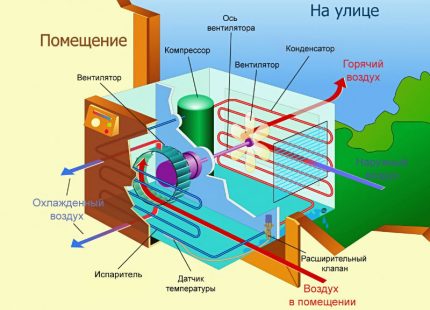
In this case, the refrigerant alternately changes the physical state, passing from gas to liquid. In the case of heating, the cycle changes exactly the opposite.
The power component of the equipment fits in an outdoor street unit. It contains a compressor, fan and condenser, working directly on cooling the air masses.
The indoor module is responsible for the distribution of cold air in the room, contains a control and monitoring system. Since the noisiest part of the equipment is carried out to the street, the split systems work quite quietly without causing any discomfort to the household.
The technique is characterized by numerous advantages:
- aesthetic appearance;
- compactness of the internal module;
- high efficiency, faster cooling due to high power;
- rational use of electricity;
- advanced functionality.
Cons are also available. These include the rather high cost of split systems, the difficult maintenance of the external part of the equipment when mounting on high floors, the complexity of stationary installation, which excludes the possibility of seasonal relocations. Professional installation is also not cheap.
Split systems are divided into several subgroups that differ in design and installation method of internal modules. Let's consider them in more detail.
Housing wall split systems performed in a variety of design options. Among them, you can choose the one that fits perfectly into the home interior.
Such blocks are relatively easy to install in the upper part of the wall, easy to operate and maintain, suitable for any residential premises.
Installation process cassette air conditioners much more complicated. The main part of the equipment is placed between the base and the suspended ceiling, only the decorative grill remains outside.
The main advantage of the design is the uniform distribution of conditioned air flows in four directions.
Floor and ceiling type The device implies two possible installation options: on the wall or ceiling. If you install it in the lower part of the wall as a convector, the air will be distributed vertically upwards, with ceiling installation - horizontally, along the surface of the ceiling.
Unpopularity columned air conditioners in everyday life is associated with their bulky dimensions, channel - with laborious and painstaking installation, requiring preliminary design study for the laying of insulated air ducts.
The complexity of installing this type of device is justified only in huge private households with high ceilings.
There is another separate kind of split systems - multisplit systemsdesigned to serve large houses, multi-room apartments. Usually they are placed in buildings, on the facades of which there is no place for several external units.
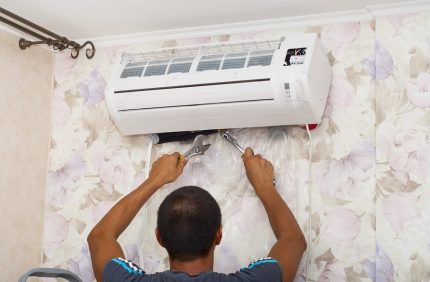
The equipment consists of a central outdoor unit and two or more indoor modules connected to it. Each of them can have different power and personal settings, but they all depend on the health of the external module - if it fails, the system does not work.
Features of monoblock conditioners
Monoblock equipment is extremely simple to install: it can be easily installed independently and, if necessary, moved around rooms, unlike split systems. It also attracts a low price.
There are two types of monoblocks:
- Window.
- Mobile
Window appliances mounted in prepared holes in a thin wall or window opening with subsequent sealing of the resulting gaps. The back of the structure faces the street.

When fastening window monoblocks, the thermal insulation of the building is often violated, which leads to free penetration of cold air into the rooms in winter. Due to the fact that the compressor unit is located directly in the room, the devices create a lot of noise.
Nevertheless, sometimes they use similar equipment for summer cottages. At the end of the summer season, it is removed and taken away for winter time, closing the mounting opening with a special shield.
Mobile candy bars positioned as portable climate technology. Despite this, they take up a lot of space, you can’t call them compact.
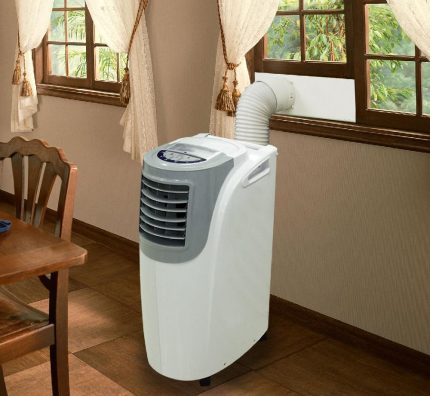
Devices are also noisy, like window monoblocks. There is an unpleasant nuance in the maintenance - during the operation of the air conditioner, the owner must constantly monitor the collection tank, avoiding excessive accumulation of condensate.
Again, mobile devices will be the best option for small country houses where it makes no sense to install stationary systems.
TOP 5 leading manufacturers of equipment
The second important question in choosing air conditioners for an apartment or a house is the manufacturer of equipment. Experts recommend trusting trusted brands that provide consumers with guarantees and provide quality service.
Below is the current rating of manufacturers of HVAC equipment in different price categories.
1st place - Daikin
The indisputable leader of the rating is the Japanese company Daikin, which left the competitors one step behind. The company's specialists pay particular attention to the technological equipment filling. The likelihood of factory defects is completely excluded.
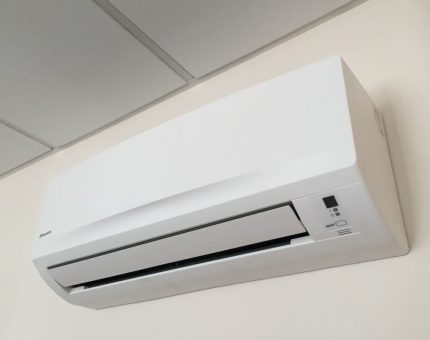
Which air conditioning company Daikin choose for the apartment depends on the wishes in terms of functionality, power, design of the internal module. The brand has a huge assortment.
Most models belong to the high price segment. Prices start from 30 thousand rubles and reach more than 200-300 thousand for cassette and floor-ceiling systems. Sometimes marks exceed the cost of similar competitive models by almost 4 times.
2nd place - Mitsubishi
Another Japanese premium brand, Mitsubishi is on the heels of its fellow countryman. The main advantage of his devices is multifunctionality.
Many options include an ionization air purification system, the possibility of self-diagnosis of malfunctions, several automatic modes, a special mechanism against freezing of the outdoor unit. Users note silent operation and lack of vibration in air conditioners.
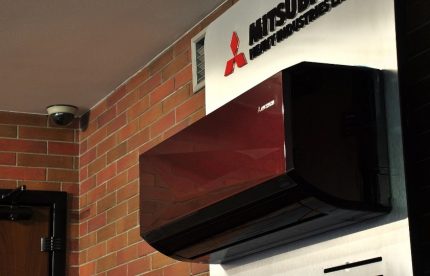
The company's lineup covers all types of climate technology. Mostly the modifications are presented in a high price category, but there are also more modest offers in the range of 25-30 thousand rubles.
3rd place - Toshiba
The next Japanese Toshiba, one of the first developers of split systems, deserves a place in the top five.
Its climate technology is a vivid representative of the optimal ratio of quality and price. A suitable model of the Toshiba split system can be bought at a price of 17 thousand rubles.
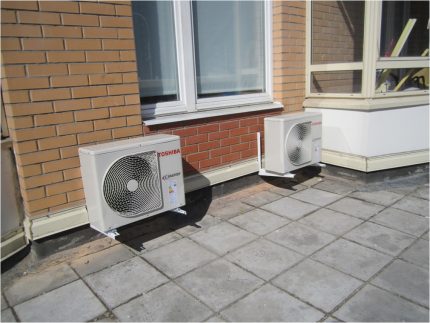
Toshiba inverter models get especially high user ratings. They have low noise figures, save up to 40% of electricity, quickly catch up to the set temperature.
4th place - Electrolux
Like the previous participant in the rating, the Swedish brand Electrolux produces climate control equipment of the middle price segment. It is popular for its affordable price, good quality, quite decent functional equipment and performance, ease of maintenance.
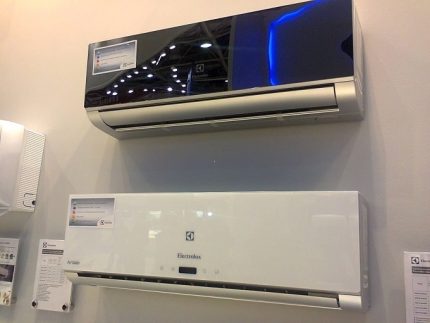
The assortment contains household equipment of any complexity, there are monoblock models and split systems of various types of installation. Most of the offers are concentrated in the price range of 13-20 thousand rubles.
5th place - Ballu
The Chinese brand Ballu specializes in the production of all kinds of climatic equipment and is considered one of the best in the budget category.
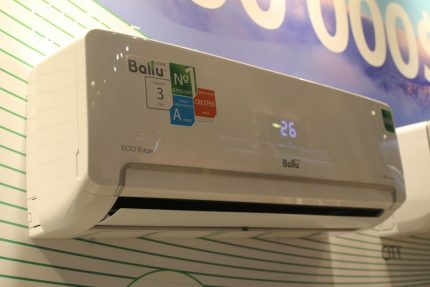
The simplest wall split system of the brand can be purchased at a price of 11 thousand rubles, a mobile candy bar for a summer residence - from 13 thousand. The cost of economical inverter air conditioners of the company starts from 17 thousand.
The choice of equipment according to technical parameters
The third determining parameter for selecting devices is their technical specifications.. In this section of the article we will discuss how to choose the right characteristics of an air conditioner, consider the useful modes and functions that it can be equipped with.
Power Counting Rules
When you decide on the suitable type and manufacturer of HVAC equipment, you will need to calculate the main technical parameter - the power of the device required for high-quality cooling. Its value depends on the area of the room where it is supposed to mount the air conditioner.
Errors in the calculation of performance parameters often lead to the fact that users buy a weak device that cools the air for a long time or does not fully cope with the tasks.
Buying a more powerful air conditioner than is necessary in fact is also useless: these are extra financial costs.
Cooling capacity is calculated individually. For medium-sized residential premises with ceilings whose height does not exceed 3 metro, this parameter is determined by dividing the total area by 10.
For every 10 squares, there must be at least 1 kW. However, this calculated value is optimal for empty rooms. To obtain the correct final result, experts recommend adding to it the power of thermal radiation from people present in the room, household appliances.

A person, depending on activity, emits an average of 0.1-0.3 kW, a computer - 0.3 kW, a television - 0.2 kW. The approximate amount of heat generated from other types of equipment is calculated as 30% of the rated power.
In addition to these indicators, it is also worth taking into account the location of the windows and the level of sunlight.
The above algorithm reduces to the following formula:
Q = q1 + q2 + q3,
Where:
- q1 - performance for an empty room, taking into account external heat influx;
- q2 - the amount of heat radiated by each person;
- q3 - the amount of heat coming from each unit of household appliances.
To count q1, you need the area of the room is multiplied by the height of the ceiling surface, and then by the light factor (for shaded rooms - 30, medium - 35, highly lit - 40). The displayed number is divided by 1000.
If you do not want to delve into the intricacies of calculations and want to get a more accurate value, use the special calculator online. Based rated power, equipment is selected in the range of -5% for the lower boundary, + 15% - for the upper one.
Important performance indicators
Profitability, sound pressure level, the possibility of smoothly maintaining the temperature, settings are also significant selection criteria.
The list of the most important operating indicators of the air conditioner is distinguished:
- energy efficiency
- noise level;
- type of compressor;
- weight and dimensions.
Higher toenergy efficiency class, the more economical the device works. The highest class is considered A +++. A ++ is practically no different from it, and such devices often cost half as much.
Devices of classes B, C and D for apartments are better not to consider.
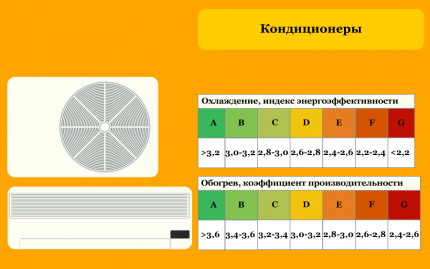
A working system should not be uncomfortable with excessive noise. Choosing a technique, you should clarify the level of noise emitted by it, measured in decibels. The main thing is that it should not be higher than the established standards of 34 dB. The optimal indicator for the home is less than 30 dB.
Air conditioners are equipped with a conventional or inverter compressor. Conventional models operate on the principle of alternating temperature peaks. After reaching the set points, they are turned off, and when the temperature returns to a certain threshold, they are turned on.
Inverter units cool the air faster: when turned on, they catch up with the desired mode at full power, and then gradually change power, monitoring temperature fluctuations.
Systems inverter type They are aimed at continuous operation, but at the same time they save a lot of electricity and minimize harmful jumps in air temperature.
The estimated installation location of the equipment should be correlated with the overall parameters of the modules. It is recommended to think over nuances in advance: admissible distance between blocks, location requirements, access to connecting communications.
Main modes and additional functions
Most models of split systems and one-piece equipment are endowed with similar basic modes and additional options.
There are different basic and additional functionalities of air conditioners:
- remote control - allows you to adjust the operating parameters using the remote control;
- heating - heats the air in the room in the off-season, but for operation in winter at an external temperature below -5 ° C, the device must be equipped with a special kit that protects the outdoor unit from freezing;
- drainage / humidification - maintain an optimal moisture balance;
- air cleaning - passes air through a system of filters that trap particles of allergens and block odors;
- ventilation - evenly distributes air throughout the area;
- ionization - saturates the air with useful air ions that improve well-being and immunity;
- air flow regulation - allows you to choose your preferred direction of cold / hot air;
- auto mode - independently chooses a program to maintain a comfortable temperature;
- night mode - minimizes the noise of the device, smoothly reduces / raises the temperature by 1-3 ° C;
- timer - sets the desired time range for the operation of the device.
Each additional opportunity is reflected in the price of the equipment. It is advisable to select only those functions that are really useful in practice. It makes no sense to overpay for excess.

Conclusions and useful video on the topic
General recommendations for the selection of domestic climatic equipment:
Is it worth buying an air conditioner? Specialist's judgments on the topic of the main myths and misconceptions associated with this category of technology:
The analysis showed that the best option for HVAC equipment for apartments would be a wall-mounted split system. If you need a convenient portable option for a summer residence, you should consider buying mobile air conditioners. Owners of large rooms from 50 m² with false ceilings are advised to take a closer look at the cassette models.
When choosing a suitable model, consider all the details and nuances described in the article. Useful information will help you make the right choice, acquire high-quality and reliable equipment that will live up to expectations and will delight you with long service.
And what guided you when choosing an air conditioner for your own home? What factors were decisive for you when choosing? What model of climate technology did you choose? Tell us about it in the comment block under the article.

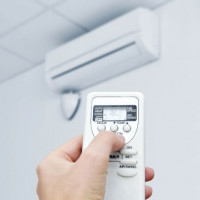 Which brand air conditioner is better to choose for an apartment: the best manufacturers of various types of equipment
Which brand air conditioner is better to choose for an apartment: the best manufacturers of various types of equipment 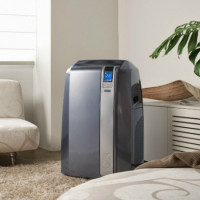 How to choose a floor air conditioner: selection tips + an overview of the best models
How to choose a floor air conditioner: selection tips + an overview of the best models 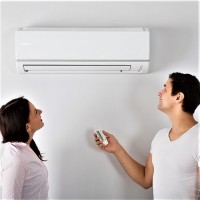 How to choose an air conditioner: recommendations for choosing + TOP-5 of the best brands
How to choose an air conditioner: recommendations for choosing + TOP-5 of the best brands 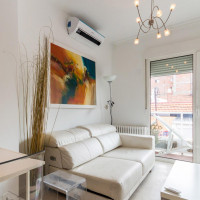 Types of air conditioners for the apartment: technical features + recommendations for customers
Types of air conditioners for the apartment: technical features + recommendations for customers 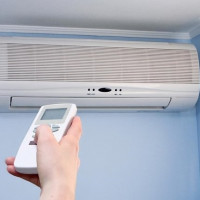 Air conditioning and split system - what is the difference? Differences and selection criteria for climate technology
Air conditioning and split system - what is the difference? Differences and selection criteria for climate technology 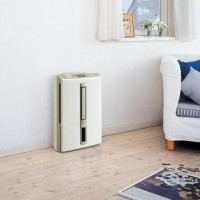 Floor air conditioners: varieties and principles of choosing the best cooler
Floor air conditioners: varieties and principles of choosing the best cooler  How much does it cost to connect gas to a private house: the price of organizing gas supply
How much does it cost to connect gas to a private house: the price of organizing gas supply  The best washing machines with dryer: model rating and customer tips
The best washing machines with dryer: model rating and customer tips  What is the color temperature of light and the nuances of choosing the temperature of the lamps to suit your needs
What is the color temperature of light and the nuances of choosing the temperature of the lamps to suit your needs  Replacement of a geyser in an apartment: replacement paperwork + basic norms and requirements
Replacement of a geyser in an apartment: replacement paperwork + basic norms and requirements
What was the author based on when forming the rating of domestic air conditioners? Pulled from the ceiling? From what sources? If only this is a high cost rating? I myself bought a recently and inexpensive split-system Galatec. Of all the mentioned, I occasionally observe only Daikin in the offices and apartments, everything is filled with Korean and little-known Chinese brands.
Good afternoon, Arthur. If you go around your high-rise building and rewrite the brands of air conditioners, you can make a rating of the preferences of the citizens of your home 🙂 The all-Russian rating, I note, will be very different from yours - the location of the split systems by position characterizes the logistics features of your area (the proximity of China will be expressed by the predominance of their brands, the proximity of Japan will be mean the dominance of their models), climate factor, average monthly salary.
Ratings are also made by sellers - attached a screenshot on which the rating of split systems sold by Amazon and added a rating on the Australian market there. Naturally, there are no matches with the rating presented by our author - but I see nothing wrong with that.
When compiling ratings, our authors take into account not only “high cost”, but conduct a deep review of user ratings on several large otzovik sites, compare functions and features, and much more.Our ratings are independent - we do not receive any remuneration from manufacturers. Here is our last rating of the best split systems in today's market, if you are interested in familiarizing yourself with the specific models recommended by our editorial staff.
In addition to choosing the right model, do not forget about the proper use of the air conditioner. I know from my own experience that I myself could catch a cold easily. Avoid sudden changes in temperature. It is optimal to set 24-26 degrees. Be sure to check if the air flow is directed in your direction. Many mistakenly believe that this mode of use is correct. No one wants to be sick in the summer. Take care of your health.